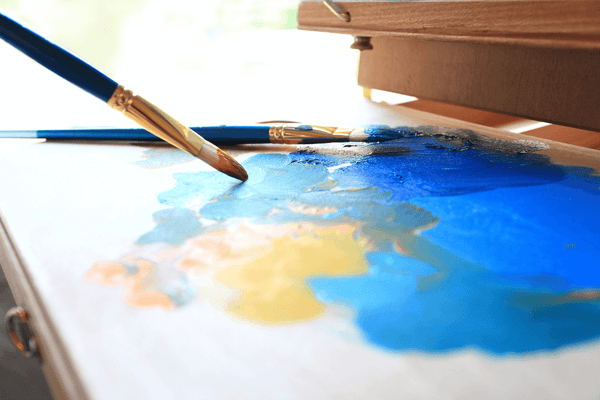
The Silent Language of Art: Communicating Unspoken Truths
Art has always been a vessel through which humanity touches upon the profound and the unuttered. It's a medium that traverses verbal limitations, bypasses linguistic boundaries, and plunges into the depths of our collective unconscious. From the pictorial narratives of the Lascaux Cave Paintings to the Contemporary Art scene's provocative questioning, artists have consistently whispered truths that sometimes, words cannot shout.
An Artistic Beginning
For me, as for many others, art is an emotional conduit, a visual dialogue that starts where words become insufficient. The act of creating in itself is a silent conversation with the self, a meditation through brushstrokes or the caress of a pencil. This artistic practice has been my sanctuary from the chaos of the outside world since childhood. When words failed to capture my complexities, the blank paper in front of me echoed profoundly.
Art became my tool for navigating through life's bittersweet and heartbreaking complexities. It’s not just the creation that was cathartic; the surrounding culture of art viewing and sharing my work added layers of understanding that a solo-pursuit of art cannot provide. It’s in the sharing and viewing of art that stories transcend the artist’s struggle, taking on a universal truth that resonates with others, perhaps making sense of their own silent struggles.
The visual metaphors I incorporate in my resin mixed media artworks often represent personal challenges I am working to overcome. For instance, consider the piece titled "Point of Focus."

This artwork features a geometric mandala-like design set against a backdrop of dark chocolate hues, structured paste, and gold foil. It symbolizes how easily we can become sidetracked by external distractions - whether shiny objects, negative energies, others' demands, or false priorities. Ultimately, the artwork reminds us that our own well-being should take precedence. By focusing on what truly matters to us, we can effectively address everything else.
History Speaks Through Canvas and Clay
Throughout history, art has served as a silent chronicler of societal achievements, fears, injustices, and revolutions. It’s an overtly subtle voice that leaves an indelible mark on culture and identity. The murals of Diego Rivera, for instance, mirrored the Mexican Revolution's ideological underpinnings; his art was as much a political statement as it was a visualization of cultural pride. Similarly, Picasso’s 'Guernica' shouted the horrors of war in a way that evokes empathy without uttering a sound.
Fast forward to contemporary art, and the dialogue continues, albeit in more abstract and diversity-formalistic ways. In modern galleries and studios across the globe, artists engage with issues of identity, social justice, technology, and the environment. Art's silence echoes with the rising decibels of voices advocating for social change, environmental protection, and human empowerment, resonating and amplifying across our collective consciousness.

The Therapeutic Canvas: Art as Expression and Healing
Beyond mere commentary, art can be profoundly personal, acting as a silent therapy for creators and viewers alike. The concept of art therapy has been formally recognized as a psychological tool that bridges the gap between the artist's subconscious and conscious thought. In a controlled environment, individuals can use art as a means to explore their innermost feelings and fears, often unearthing silent truths that were buried by the daily noise.
Real-life accounts abound of individuals finding solace in the act of creation. The story of a combat veteran using sculpting to process the trauma of war illustrates art’s power in facilitating healing. In a studio devoid of judgment, devoid of voices that inadequately dissect pain, art becomes the voice of catharsis. It's therapy that whispers to the soul, urging one to confront their truth, yet compassionately.

The Viewer’s Voice: Interpreting the Unspoken
A silent dialogue is incomplete without a receptive listener. Much like the artist who uses art to communicate, the act of viewing art is one of interpretation and understanding. Not only does art have its own silent language, but it also echoes with every viewer's unique voice and perspective. A piece of art can be a mirror that reflects the viewer’s own silent worlds and unspoken truths, returning with a resonance that’s both novel and deeply personal.
In a diverse society, the viewer’s voice is especially crucial. It ensures art remains a living, breathing entity, subjected to various silent readings that layer meaning. It’s a catalyst for conversations that would have otherwise remained unspoken. This interaction between audience and art is what sustains silent communication, making it a symphony of collective experiences.

The Canvas of the Future
The future of art is exciting precisely because it remains shrouded in the silent ambiguity of what is yet to come. With each brushstroke, each installation, art continues to shape and reshape the narratives around us. It bridges the disconnected and initiates dialogues that are poignant precisely because they are wordless.
In a world brimming with words, art remains a sanctuary of silence, where truths echo louder than any voice. Whether you partake in its creation, appreciate its messages, or simply immerse yourself in its silent language, art is an invitation to participate in one of the most profound exchanges humanity has with itself. And in this, perhaps, lies the most powerful truth of all - that our shared silence speaks volumes about our shared experiences.

I invite you, dear readers, to reflect on the therapeutic power of art in our lives. How do you connect with art for comfort, insight, or self-expression? Share your experiences and creative processes that help navigate challenges and difficulties. Through your art, observations, or conversations about art, our combined efforts enrich the profound language of artistic expression.




Leave a comment
This site is protected by hCaptcha and the hCaptcha Privacy Policy and Terms of Service apply.